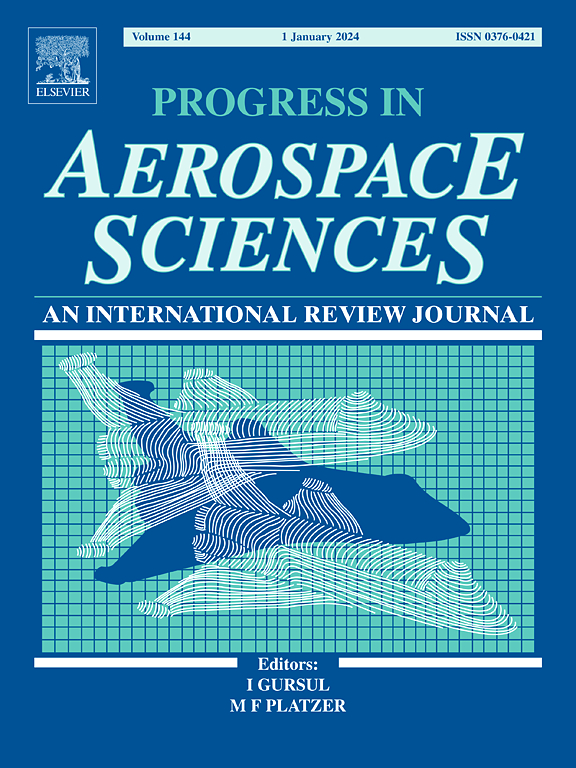A review of parameterization methods for airfoil design
IF 16.2
1区 工程技术
Q1 ENGINEERING, AEROSPACE
引用次数: 0
Abstract
Airfoil parameterization, or the description of airfoil geometry by a tractable set of parameters, has been the focus of a multitude of publications for nearly a century. The present work provides an explanation of and commentary on a large portion of these methods, as well as a summary of their use in airfoil design and optimization. Recommendations for using airfoil parameterization methods is provided, taking into account the type of airfoil design problem, as well as an updated review of current parameterization techniques. Additionally, a novel parameterization technique using -continuous composite Bézier curves is introduced. This airfoil parameterization method is compared in terms of performance against a selection of other airfoil parameterization methods from the literature in a set of airfoil fitting problems. This comparison demonstrates that higher-order parameterization methods provide better fidelity of airfoil representation than the lower-order parameterization methods, both when applied to an NACA 0012 airfoil and an RAE 2822 airfoil. The composite Bézier approach also gave excellent results used to define other well-known airfoils. A comparison of aerodynamic shape optimizations using these parameterization approaches further showed that higher-order methods like the degree-5 B-spline and degree-6 Bézier provide a more effective optimal design, when compared to lower-order methods.
翼型设计参数化方法综述
翼型参数化,或描述翼型几何由一套可处理的参数,已成为众多出版物的焦点近一个世纪。目前的工作提供了对这些方法的很大一部分的解释和评论,以及他们在翼型设计和优化使用的总结。建议使用翼型参数化方法提供,考虑到类型的翼型设计问题,以及更新的审查当前参数化技术。此外,还介绍了一种利用g2 -连续复合bassazier曲线进行参数化的新方法。这种翼型参数化方法是比较在性能方面对其他翼型参数化方法的选择从一组翼型拟合问题的文献。这一比较表明,高阶参数化方法提供了更好的保真度翼型表示比低阶参数化方法,既适用于NACA 0012翼型和RAE 2822翼型。复合bsamzier方法也给出了极好的结果用于定义其他知名的翼型。使用这些参数化方法进行气动形状优化的比较进一步表明,与低阶方法相比,高阶方法(如5次b样条和6次bsamizier)提供了更有效的优化设计。
本文章由计算机程序翻译,如有差异,请以英文原文为准。
求助全文
约1分钟内获得全文
求助全文
来源期刊

Progress in Aerospace Sciences
工程技术-工程:宇航
CiteScore
20.20
自引率
3.10%
发文量
41
审稿时长
5 months
期刊介绍:
"Progress in Aerospace Sciences" is a prestigious international review journal focusing on research in aerospace sciences and its applications in research organizations, industry, and universities. The journal aims to appeal to a wide range of readers and provide valuable information.
The primary content of the journal consists of specially commissioned review articles. These articles serve to collate the latest advancements in the expansive field of aerospace sciences. Unlike other journals, there are no restrictions on the length of papers. Authors are encouraged to furnish specialist readers with a clear and concise summary of recent work, while also providing enough detail for general aerospace readers to stay updated on developments in fields beyond their own expertise.
 求助内容:
求助内容: 应助结果提醒方式:
应助结果提醒方式:


